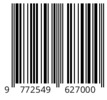Representation of Toxic Masculinity in Steve Rogers’ Captain America: The First Avenger
Abstract
Toxic masculinity emphasizes men to be tough, strong, avoid showing emotions. Consequently it creates toxic men with no compassion, and justified violent to be dominant. This study aims to observe the representation of toxic masculinity in the film through Steve Rogers character using toxic masculinity theory. This qualitative research used intrinsic approach. The result showed the representation of toxic masculinity in Steve Rogers emphasized several things; 1)man must be tough, strong, and dare to take risk,2)man must pursue their ambitions by any means,3)man must avoid expressing emotions.
Keywords
Full Text:
PDFReferences
Aikioniemi, H. (2021). “I finally got everything i wanted, and i’m wearing tights”: the construction of Steve Rogers’ masculinity in Marvel Studios’ Captain America: The First Avenger. University of Oulu.
Allanana, G. (2013). Patriarchy and Gender Inequality in Nigeria: The Way Forward. European Scientific Journal, 9(17).
Barrow, M. (2013). World War 2 Jobs. Primary Homework Help. http://www.primaryhomeworkhelp.co.uk/war/jobs.html
Craig, S. (1992). Men, masculinity and the media (Vol. 2). Sage Publications.
De Dauw, E., & Connell, D. J. (Eds.). (2020). Toxic Masculinity: Mapping the Monstrous in Our Heroes. University Press of Mississippi.
Ellemers, N. (2018). Gender Stereotypes. Annual Review of Psychology, 69(1), 275–298. https://doi.org/10.1146/annurev-psych-122216-011719
Fedorak, S. (2009). Pop Culture: The Culture of Everyday Life (1st ed.). University of Toronto Press.
Hentschel, T., Heilman, M. E., & Peus, C. V. (2019). The Multiple Dimensions of Gender Stereotypes: A Current Look at Men’s and Women’s Characterizations of Others and Themselves. Frontiers in Psychology, 10. https://doi.org/10.3389/fpsyg.2019.00011
Hilaldo, Z. R., Suwargono, E., & Wardani, L. D. P. (2019). Gender Struggle in Deborah Ellis’ Parvana Mud City. Semiotika: Jurnal Ilmu Sastra Dan Linguistik, 20(1), 26. https://doi.org/10.19184/semiotika.v20i1.10816
Ingram, K. M., Davis, J. P., Espelage, D. L., Hatchel, T., Merrin, G. J., Valido, A., & Torgal, C. (2019). Longitudinal associations between features of toxic masculinity and bystander willingness to intervene in bullying among middle school boys. Journal of School Psychology, 77, 139–151. https://doi.org/10.1016/j.jsp.2019.10.007
Johnson, A. G. (2004). Patriarchy, The System. In Women’s Lives Multicultural Perspectives (3rd ed.). McGraw-Hill.
Johnston, J. (2011, July 19). Captain America: The First Avenger. Paramount Pictures [Film].
Kupers, T. A. (2005). Toxic masculinity as a barrier to mental health treatment in prison. Journal of Clinical Psychology, 61(6), 713–724. https://doi.org/10.1002/jclp.20105
Lout, J. N. (2017). “Agents of Global Armament: Analyzing Masculinity and Militarism in ‘Captain America’ and the Marvel Cinematic Universe.” University of Texas at El Paso.
Markus, C., & McFeely., S (2011, July 19). Captain America: The First Avenger. Paramount Pictures [Screenplay].
Jonathan McIntosh. (2016). What is toxic masculinity? https://www.youtube.com/watch?v=Gha3kEECqUk.
Aikioniemi, H. (2021). “I finally got everything i wanted, and i’m wearing tights”: the construction of Steve Rogers’ masculinity in Marvel Studios’ Captain America: The First Avenger. University of Oulu.
Allanana, G. (2013). Patriarchy and Gender Inequality in Nigeria: The Way Forward. European Scientific Journal, 9(17).
Barrow, M. (2013). World War 2 Jobs. Primary Homework Help. http://www.primaryhomeworkhelp.co.uk/war/jobs.html
Craig, S. (1992). Men, masculinity and the media (Vol. 2). Sage Publications.
De Dauw, E., & Connell, D. J. (Eds.). (2020). Toxic Masculinity: Mapping the Monstrous in Our Heroes. University Press of Mississippi.
Ellemers, N. (2018). Gender Stereotypes. Annual Review of Psychology, 69(1), 275–298. https://doi.org/10.1146/annurev-psych-122216-011719
Fedorak, S. (2009). Pop Culture: The Culture of Everyday Life (1st ed.). University of Toronto Press.
Hentschel, T., Heilman, M. E., & Peus, C. V. (2019). The Multiple Dimensions of Gender Stereotypes: A Current Look at Men’s and Women’s Characterizations of Others and Themselves. Frontiers in Psychology, 10. https://doi.org/10.3389/fpsyg.2019.00011
Hilaldo, Z. R., Suwargono, E., & Wardani, L. D. P. (2019). Gender Struggle in Deborah Ellis’ Parvana Mud City. Semiotika: Jurnal Ilmu Sastra Dan Linguistik, 20(1), 26. https://doi.org/10.19184/semiotika.v20i1.10816
Ingram, K. M., Davis, J. P., Espelage, D. L., Hatchel, T., Merrin, G. J., Valido, A., & Torgal, C. (2019). Longitudinal associations between features of toxic masculinity and bystander willingness to intervene in bullying among middle school boys. Journal of School Psychology, 77, 139–151. https://doi.org/10.1016/j.jsp.2019.10.007
Johnson, A. G. (2004). Patriarchy, The System. In Women’s Lives Multicultural Perspectives (3rd ed.). McGraw-Hill.
Johnston, J. (2011, July 19). Captain America: The First Avenger. Paramount Pictures [Film].
Kupers, T. A. (2005). Toxic masculinity as a barrier to mental health treatment in prison. Journal of Clinical Psychology, 61(6), 713–724. https://doi.org/10.1002/jclp.20105
Lout, J. N. (2017). “Agents of Global Armament: Analyzing Masculinity and Militarism in ‘Captain America’ and the Marvel Cinematic Universe.” University of Texas at El Paso.
Markus, C., & McFeely., S (2011, July 19). Captain America: The First Avenger. Paramount Pictures [Screenplay].
Jonathan McIntosh. (2016). What is toxic masculinity? https://www.youtube.com/watch?v=Gha3kEECqUk.
Murnen, S. K., & Don, B. P. (2012). Body Image and Gender Roles. In Encyclopedia of Body Image and Human Appearance (pp. 128–134). Elsevier. https://doi.org/10.1016/B978-0-12-384925-0.00019-5
Niyogi, S. (2021). Toxic Masculinity Hurts Both Men and Women. The Times of India. https://timesofindia.indiatimes.com/city/kolkata/toxic-masculinity-hurts-both-men-and-women/articleshow/87918870.cms
Pratista, H. (2008). Memahami Film. Homerian Pustaka.
Prentice, D. A., & Carranza, E. (2002). What Women and Men Should Be, Shouldn’t be, are Allowed to be, and don’t Have to Be: The Contents of Prescriptive Gender Stereotypes. Psychology of Women Quarterly, 26(4), 269–281. https://doi.org/10.1111/1471-6402.t01-1-00066
Prince, S. (2003). Movies and Meaning: An Introduction to film (3rd ed.). Allyn & Bacon.
Ratna, N. K. (2006). Teori, Metode, dan Teknik Penelitian Sastra: Dari Strukturalisme hingga Postrukturalisme Perspektif Wacana Naratif . Pustaka Belajar.
Rotundi, L. (2020). The Issue of Toxic Masculinity. Libera Università Internazionale degli Studi Sociali Guido Carli.
Siagian, N. N. S. U. (2022). A Portrayal of Toxic Masculinity in Thanos’s Avengers Endgame.LITERA KULTURA: : Journal of Literary and Cultural Studies. , 9(2), 59–65.
Sculos, B. W. (2017). We are the Beast: On Toxic Masculinity and Social Responsibility in Disney’s Beauty and the Beast. Class Race Corporate Power, 5(2). https://doi.org/10.25148/CRCP.5.2.006511
Steven J. Taylor, R. B. M. D. (2015). Introduction to qualitative research methods: A guidebook and resource (4th ed.). John Wiley & Sons.
DOI: https://doi.org/10.31002/transformatika.v8i1.7974
DOI (PDF): https://doi.org/10.31002/transformatika.v8i1.7974.g3315
Refbacks
- There are currently no refbacks.
Copyright (c) 2024 Nurul Istiqamah Istiqamah Kadekoh, Magdalena Baga, Rusni Podungge

This work is licensed under a Creative Commons Attribution-ShareAlike 4.0 International License.


_(2)_.png)
.png)
_.png)
.png)
.png)















